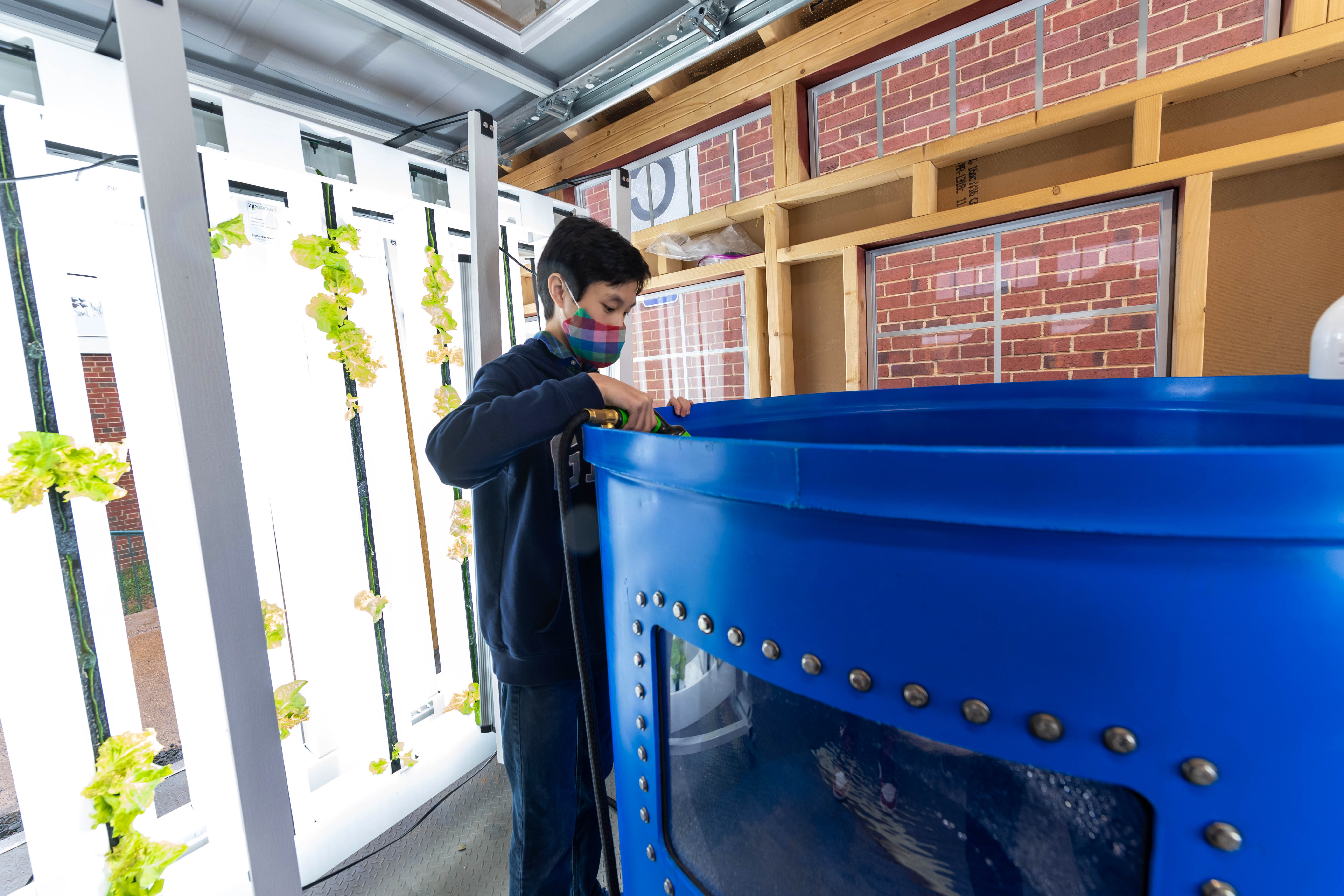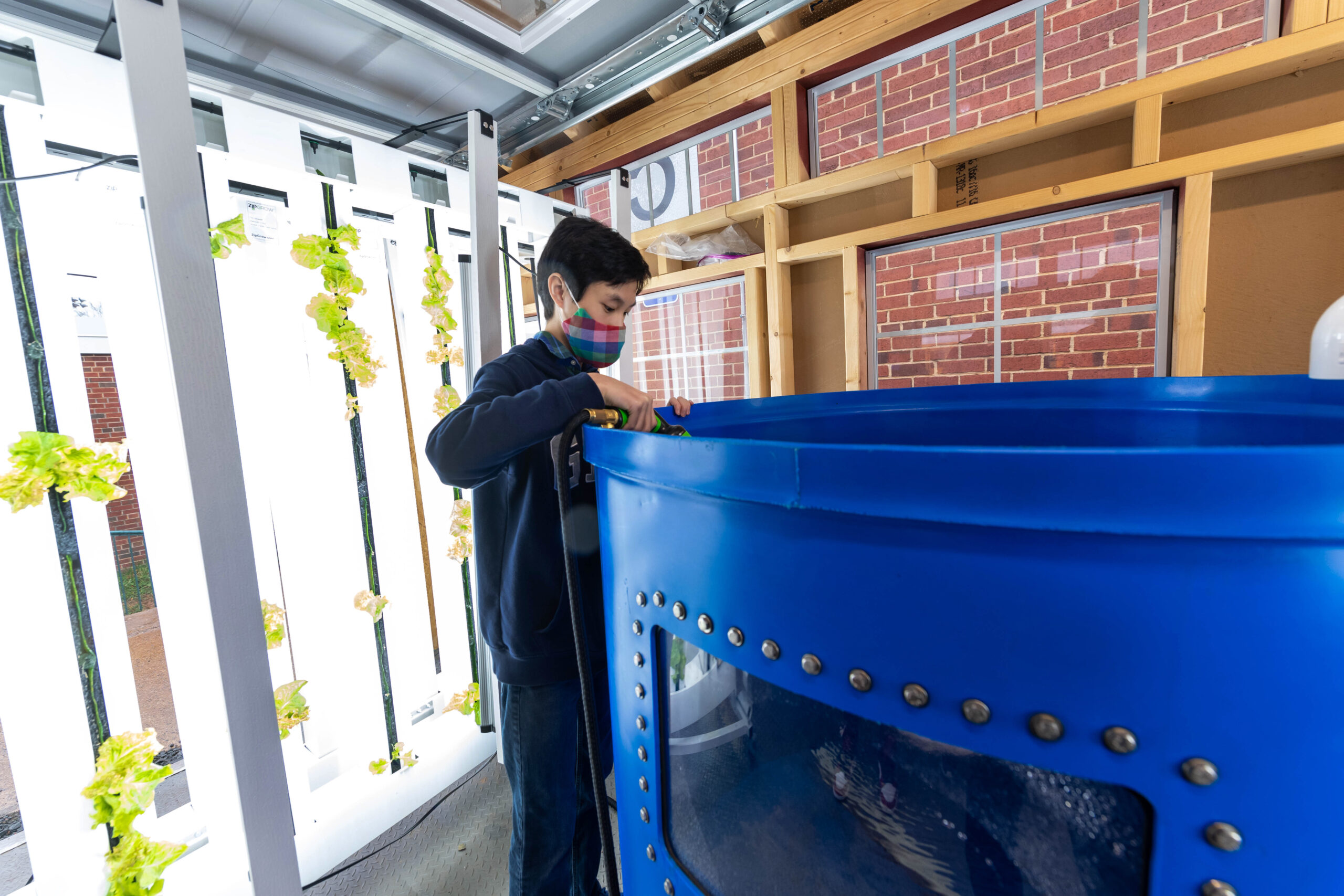
Luther Jackson Middle School in Falls Church Virginia allows its students to choose their own projects as part of their ESTEEM Center for Equity in science, technology, engineering, english and math program. In one of these projects, engineering students are running a futuristic farming operation. In an ordinary-looking shed, plastic towers are bursting with green spinach and lettuce leaves that will soon be donated to the school’s food pantry. Next to the tower sits a large circular water tank that will house about fifty tilapia fish. The complex ecosystem, known as hydroponics, will allow the fish waste to nourish the plants as the plants filter the fish’s water. The project has been in the works for two years and is now coming to life.
The students begin the process by placing seeds in coconut based plugs and waiting for them to begin sprouting. Next, they insert the seedlings into plastic towers lined with wicking fibers. A trough of water which sits below is pumped to nozzles above. Water continuously drips down through the towers, hydrating the plants, and back into the trough to be recirculated. The system uses no dirt and only about two gallons of water a month, which is significantly less space and water used in traditional farming methods.
The engineering students are running every part of this operation. They are adjusting the lights, the temperature, the fans, the heaters and the water level. They have to get the environment just right for this to be successful. The growth process is optimized to grow the plants within three weeks, a goal which students believe is important to be able to create food with limited resources. They also see the value of saving space and water, which can be beneficial for places that are food deserts. Students are able to produce about an acre’s worth of produce per tower, which they consider to be a big deal.
As middle school students move on to high school, the new seventh graders are being trained by veteran students who have worked on the project for an entire year. This method of transfer is advantageous because the veteran students can share information with the new students about what’s gone wrong in the past and how they can improve in the future. The types of problems that students encounter while working on their projects include PH problems, ammonia problems, leading them to do research to figure out if other people have had the same problems. Solutions are not always obvious, so they need to keep an open mind.
The project is funded by Northrop Grumman, Dominion Energy, and the Micron Opportunity Fund at the Community Foundation. Students also publish their findings in the school’s engineering student newspaper ESTEEMStream.News, which is the largest middle school publication in the United States. One of the students working on this project summarized it well: “It’s been very cool and I really like this project because it’s very hands-on, but mostly I feel very proud because we’ve grown a huge bin of lettuce to give to families who can’t access fresh vegetables. That feels great.”
